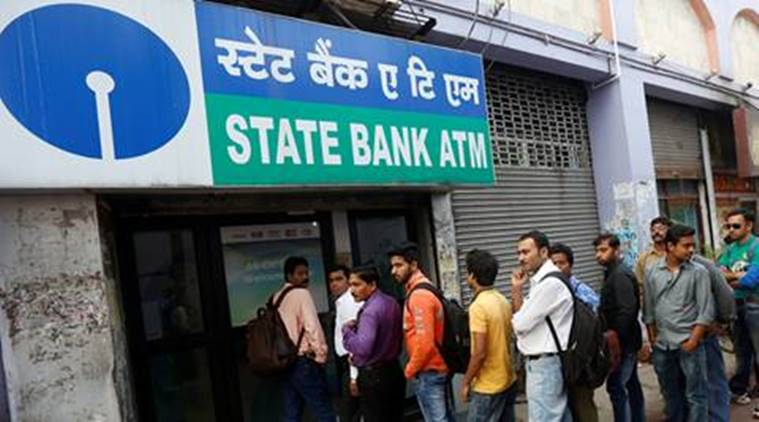 One reason cited for its withdrawal is that the misconception led to panic withdrawal of cash by depositors and eroded public trust. (Source: Reuters)
One reason cited for its withdrawal is that the misconception led to panic withdrawal of cash by depositors and eroded public trust. (Source: Reuters)
Rattled by widespread criticism and public anxiety despite its assurances, the NDA government has decided to drop the Financial Resolution and Deposit Insurance (FRDI) Bill after concerns were raised over the security of bank deposits.
Sources said the decision to withdraw the FRDI Bill of 2017 was taken a day ahead of the protests by employee unions of banks and state-run insurance companies on July 14 and the Department of Economic Affairs was instructed to prepare the Bill withdrawal proposal for the Cabinet’s approval.
One reason cited for its withdrawal is that the misconception led to panic withdrawal of cash by depositors and eroded public trust.
The basis for these fears is a controversial “bail-in” clause in the Bill that says that in case of insolvency in a bank, the depositors will have to bear a part of the cost of the resolution by a corresponding reduction in their claims.
One official said that the Cabinet was likely to take up the proposal for withdrawal of the FRDI Bill Wednesday. Since all Bills are introduced after Cabinet approval, any withdrawal also needs Cabinet approval, he explained.
The Bill, introduced in August 2017, was referred to a Joint Committee of the Parliament which is consulting all stakeholders.
Though it was asked to submit its report by the last day of the Monsoon Session ending August 10, the panel is unlikely to finalise the recommendations before the Winter Session.
“With the report likely to come out in December, the government’s fear could be that it would be approaching the general elections next year with largescale negativism among the public,” said the official.
While trying to dispel all misgivings about the Bill, the NDA government clarified that the “bail-in” clause would not be applied to public sector banks and it would be a tool of last resort — when a merger or acquisition is not viable — in the case of private sector banks.
It has also affirmed that the depositors will be given preferential treatment in the event of liquidation of a bank and the controversial bail-in clause will be used only with the prior consent of depositors.
In fact, Prime Minister Narendra Modi had told an election rally in Gujarat that the Congress was “spreading lies” that the FRDI Bill will lead to “bankrupt banks taking away people’s hard-earned deposits”. “Do you think I will let that happen?” he had asked.
The FRDI Bill was meant to address the issue of insolvency of firms in the financial sector – so that if a bank, a Non Banking Finance Company (NBFC), an insurance company, a pension fund or a mutual fund run by an asset management company, fails, a quick solution is available to either sell that firm, merge it with another firm, or close it down, with the least disruption to the system, to the economy, and to investors and other stakeholders.
This was to be done through a new entity, a Financial Resolution Corporation envisaged as an agency that will classify firms according to the risks they pose, carry out inspections and, at a later stage, take over control. This was recommended by the Financial Sector Legislative Reforms Commission (FSLRC) headed by Justice B N Srikrishna.
The controversial aspect of the Bill was the “bail-in” provision.
“Bailout” is when governments step in to protect interests of savers or depositors – like in the UK when there was a run on deposits of banks. There were cases in the US and other parts of Europe, too. The fact that huge public funds were used for such support, and criticism that bailouts incentivised bank managements to take risky bets led governments to seek other solutions.
Regulators put in place laws and rules to discourage or prevent such bailouts with new resolution regimes. Losses of these financial firms had to be borne by shareholders and creditors rather than taxpayers. One of the tools for such resolution is “bail-in”.
It allows resolution agencies to override the rights of the shareholders of the firm – this could mean writing down of a company’s equity and debt to absorb losses, or converting debt into equity. This could also mean overriding requirements such as approvals by shareholders and disposing of the firms’ assets.
Given that bank deposits make up the dominant share of financial savings in India, the fear was that to lower risk and the burden on taxpayers, policymakers may want to nudge savers on the same path as elsewhere. Currently, deposits in banks are insured for a maximum of Rs 1 lakh by the Deposit Insurance and Credit Guarantee Corporation, an arm of the RBI. There were concerns expressed that the Bill may not clearly lay down the quantum of protection for deposits.
But the government said that India’s FRDI Bill is more depositor-friendly than that of many other jurisdictions and that it does not propose in any way to limit the scope of powers to extend financing and resolution support to banks, including public sector banks.